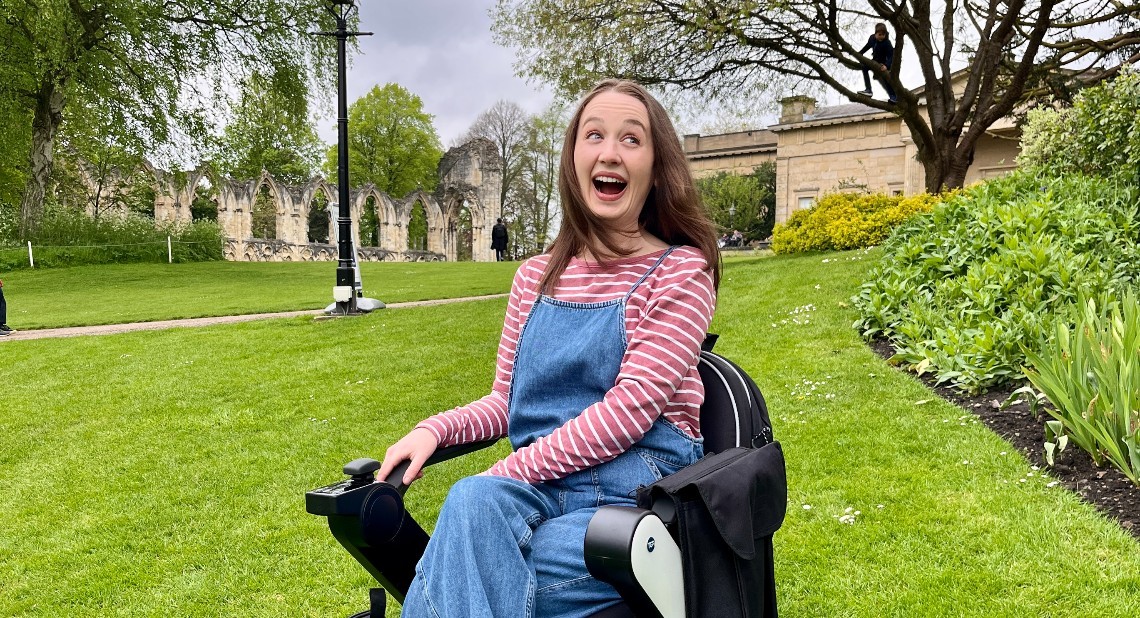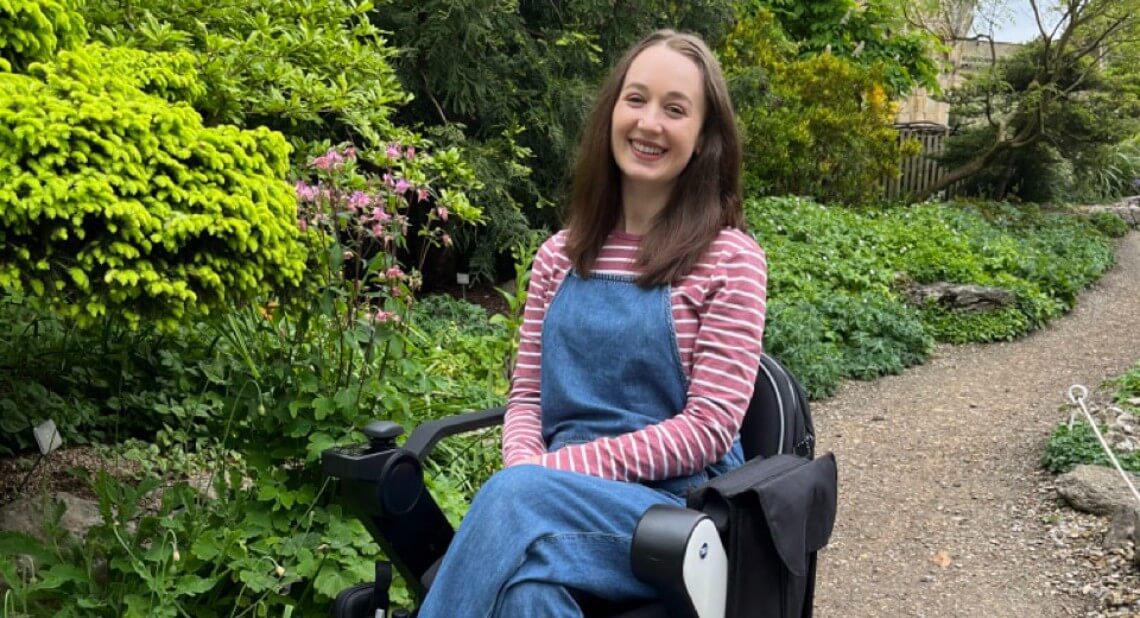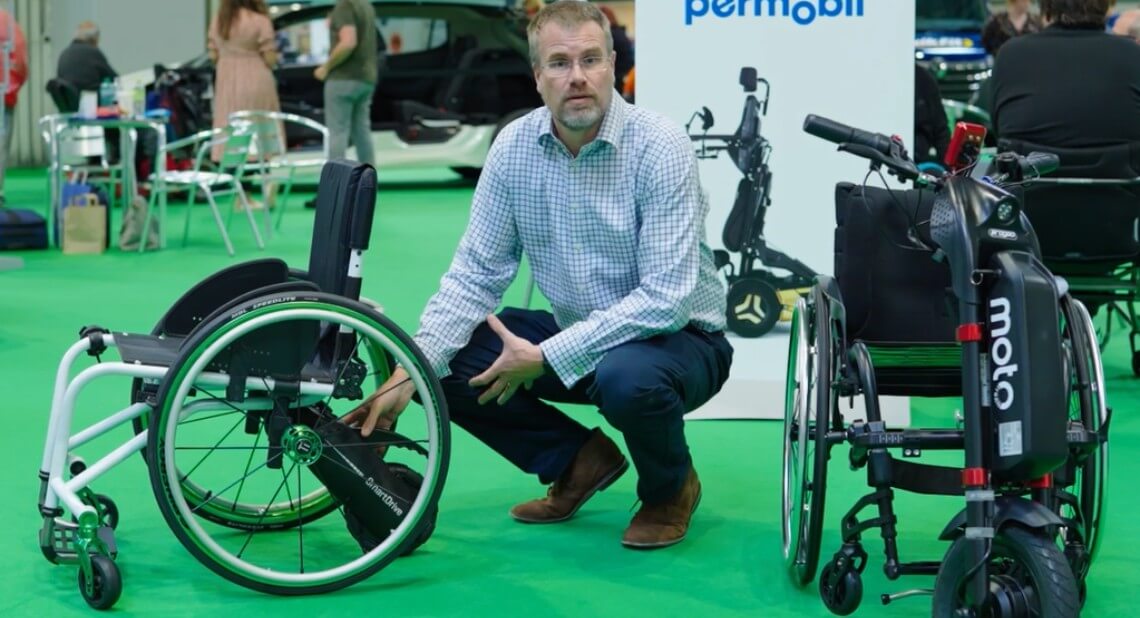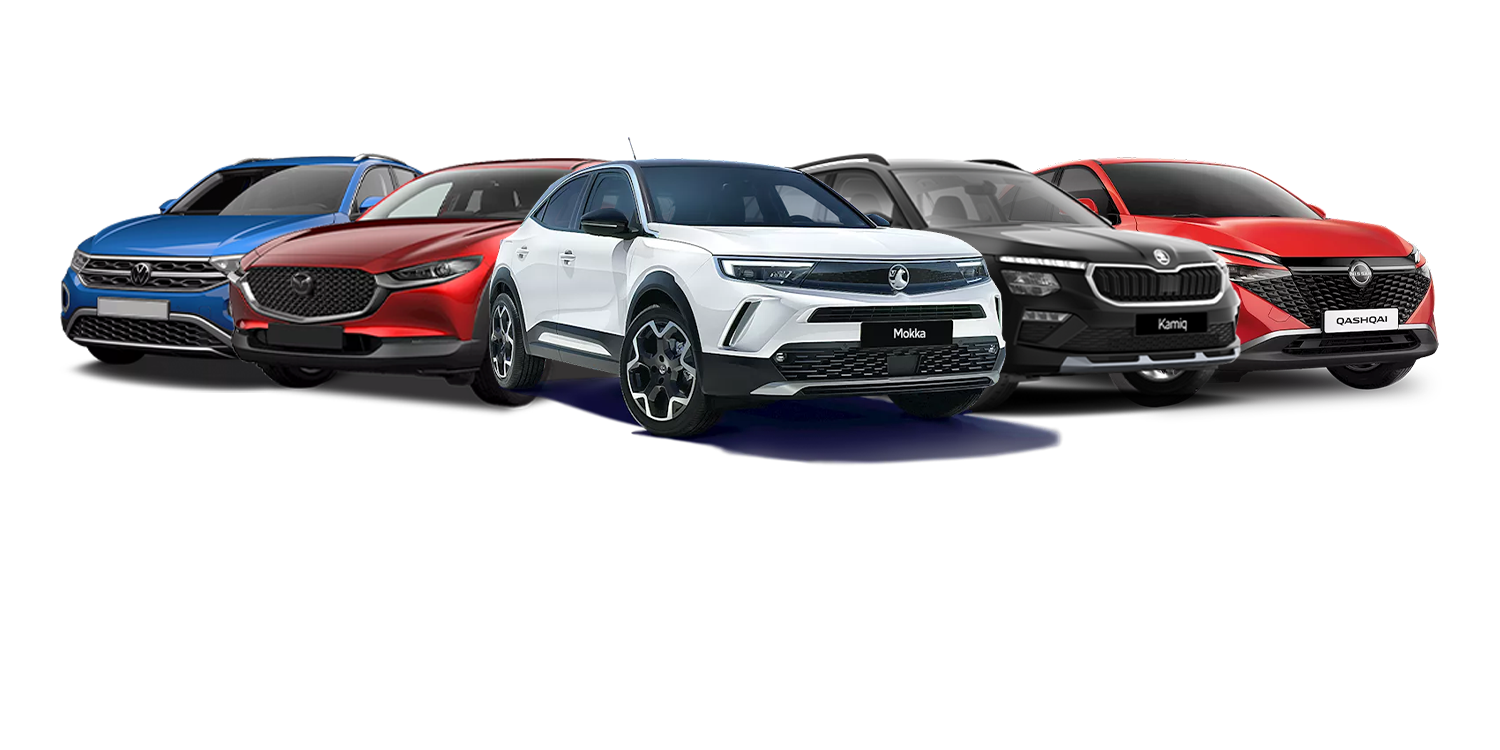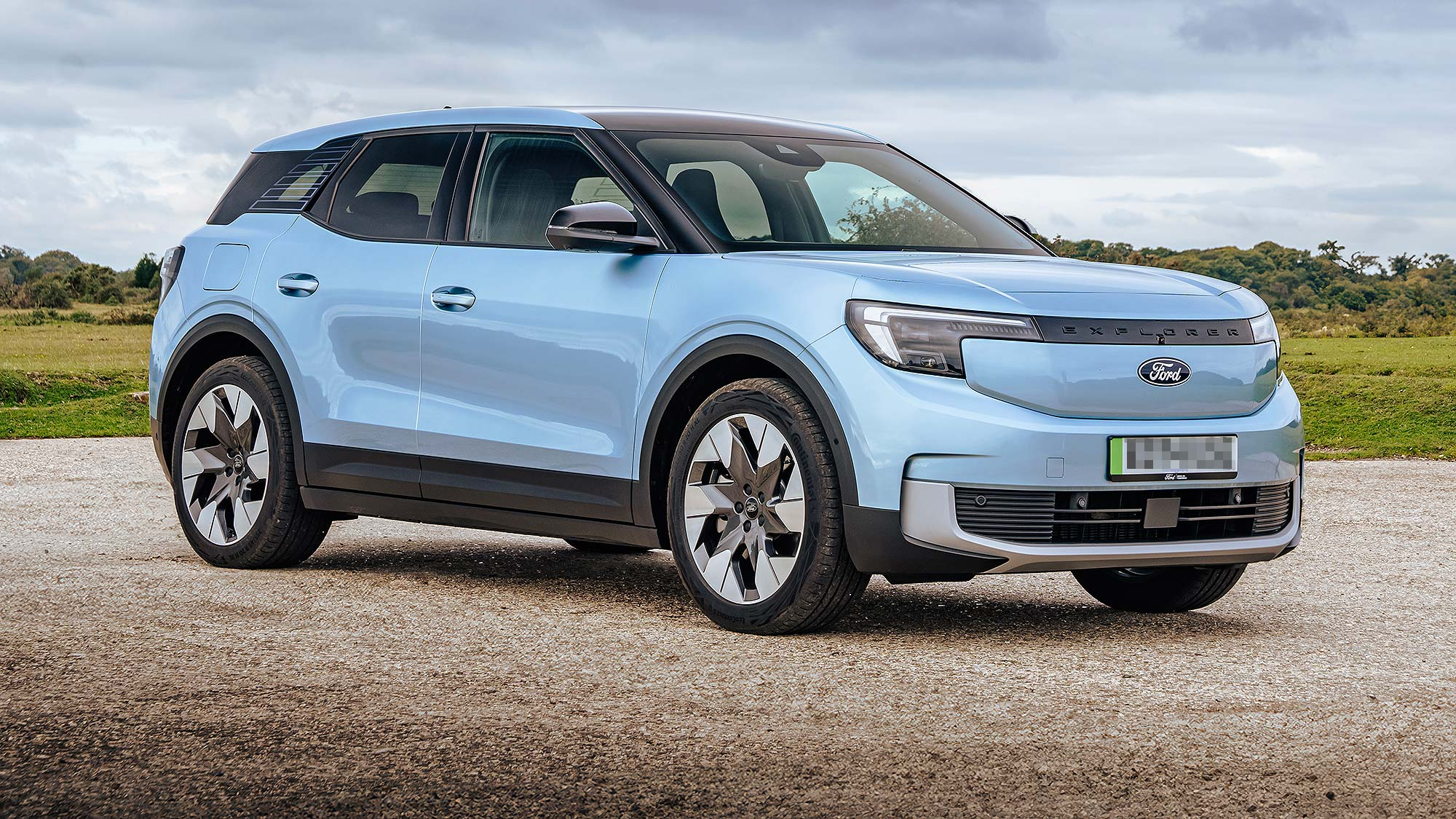Switching from a manual to a powered wheelchair is a big decision. You need to make sure it’s the right choice for you by taking some careful steps. In this article, writer Pippa Stacey* explains why she switched from a manual to a powered wheelchair. She shares her first impressions and how it’s improved her quality of life. Pippa also offers tips for anyone who is thinking about making the switch.
I started using a manual wheelchair after I was diagnosed with a chronic illness affecting my mobility. When your condition affects your ability to stand or walk, a manual wheelchair is usually a good option as they can be accessible, affordable, and easier to transport. It’s a good first mobility aid experience to help improve your quality of life.
Before using a manual wheelchair, I found it difficult to leave the house and took days to recover from fatigue. Having a manual chair meant I could enjoy outings and spend time with loved ones, using less energy.
However, as I could not move the manual wheelchair myself, I needed other people to push me whenever I wanted to go anywhere. I was grateful for their support, but I wished I had more freedom and control over my movements. This led me to explore powered wheelchairs, which offered the freedom to move without needing help from others.
- How to know when you need a powered wheelchair
- How does a powered wheelchair compare to a manual wheelchair
- Key things to consider before you get a powered wheelchair
How to know when you need a powered wheelchair
Making the switch from a manual to a powered wheelchair is not something you can rush. Everybody’s timeline and access needs are different. But I believe you’ll know when it’s right for you.
As my symptoms improved, I found I was able to leave the house much more often than before. This gave me the confidence to go on bigger adventures. That’s when I thought about a powered wheelchair to help me explore new places on my own.
Read this helpful guide to choosing a powered wheelchair.
How does a powered wheelchair compare to a manual wheelchair?
Before I switched to a powered wheelchair, I researched different options that would help my access needs. I tried to arrange a test drive of my favourite models in person. This gave me my first taste of what it would feel like to use a powered wheelchair. It also helped me think about using one regularly.
When you use a manual wheelchair pushed by somebody else, you do not have to use much mental energy. The person pushing you is in charge of directions and navigating the space. But when you’re driving a power-assisted wheelchair, you will need much more attention. Here is a list of some of the things you need to focus on when you’re out and about:
-
Pay attention to the path and other pedestrians
-
Look out for obstacles such as potholes and uneven surfaces
-
Choose the safest route
In my experience, it works best if you:
-
start with small journeys first to test your abilities to drive and build your confidence
- try a journey with someone else first, until you become comfortable on your own
-
make sure you have plenty of time to rest and recover before and after your journeys
- can use technology to help you, like the Sociability app, which helps you find accessible places
If you need to manage your energy levels as part of your condition, a big benefit of using a powered wheelchair is that you can control your speed. You can also stop and start moving whenever you like.
I often felt motion sick when I used a manual wheelchair. My companion, who was pushing me, would sometimes not hear me when I needed a little break. Who needs theme park tickets when you have teenage friends zipping you around a shopping centre at speed during the January sales?!
For more information around the rules of driving your powered wheelchair outdoors, visit the UK Government website.
Key things to consider before you get a powered wheelchair
Powered wheelchairs have many benefits, but the experience of using one is very different from a manual wheelchair. Here are some of the key things and considerations I thought about before I made the switch:
Are powered wheelchairs more expensive?
Powered wheelchairs are usually a more expensive option compared to manual wheelchairs. But with the Motability Scheme, you can lease a powered wheelchair using your mobility allowance. With the Scheme, you’ll also get an all-inclusive package including insurance, breakdown cover, service and routine repairs, and batteries and tyres.
If you do not qualify for the Scheme or use your allowance to lease a car or a Wheelchair Accessible Vehicle (WAV), you might find funding through NHS Wheelchair Services, the Access To Work Scheme, or local charities.
How to charge your powered wheelchair’s battery
Powered wheelchairs come with batteries that need to be charged and looked after. If you use a wheelchair with a power pack indoors and live in an accessible building, you should be able to plug your battery into a socket in your home.
If you cannot charge your powered wheelchair in your home, you may have to lift and carry the (sometimes heavy!) battery in and out to keep it charged. The batteries can sometimes be quite heavy, so it’s important to think about the steps you’ll need to take to charge them.
My best advice is to always be mindful of your battery levels. Try to charge the battery whenever you’re at home so you can enjoy your days out without having to think about the battery.
Read these top tips for looking after your powered wheelchair
Transporting your powered wheelchair
Transporting a powered wheelchair can be tricky. I live in a city with decent public transport links, making things easier. But travelling in a non-adapted car with a powered chair can be difficult. If you do not have a Wheelchair Accessible Vehicle (WAV), you should think about how to safely transport your mobility aid in a standard car. It’s important to think about the size and weight of the powered wheelchair you choose so it can fit the car you’ll need to use.
Find out more about tips for using public transport with a powered wheelchair.
How to store your powered wheelchair
Storage solutions for your powered wheelchair are key. If, like me, you’re an ambulatory wheelchair user (meaning you use mobility aids some of the time but not all the time)you’ll need to think about where you store your powered wheelchair when you’re not using it.
Before you choose your powered wheelchair, you should judge whether you’ll be able to get your wheelchair indoors if you need to. If you cannot store it indoors, you’ll need to think about if there is somewhere safe and dry to store it outdoors.
Read these tips for storing your mobility aid outside.
The benefits of using a powered wheelchair
I honestly feel using a powered wheelchair has given me my life back. I now have much more freedom to get outside at a time and pace that suits me. I get less tired now that I use my powered wheelchair than before.
Since becoming a powerchair user, I’ve been able to travel around the UK and beyond, say yes to exciting work opportunities, and spend more quality time with my favourite people. All these things have had a hugely positive effect on my mental health. Using a powered wheelchair has its challenges, like dealing with inaccessible places and health issues, but I’m grateful for it every day.
If you’re considering switching from a manual to a powered wheelchair, my best advice is to take your time. Everybody is different, so research the different options and carefully think through any issues you may face. If you can, try out a few models in person and see how you get on.
Find a Motability Scheme dealer
There are around 100 Motability Scheme dealers for powered wheelchairs and scooters across the UK. They’ll support you throughout your lease. Your dealer will help you pick the right mobility aid, order and deliver it. They’ll also take care of any servicing or maintenance.
*Author’s bio:
Pippa Stacey is a disabled writer, speaker, and content creator. She also works as a communication consultant in the charity sector. Pippa has authored books and eBooks about her chronic illness, sharing her story and insights. She’s also hosted webinars, spoken on panels, been on podcasts, and given a TEDx talk.
Related articles
Guide to choosing your powered wheelchair
Maintenance tips for your powered wheelchair or scooter
Keeping your scooter or powered wheelchair safe and secure
![]()
